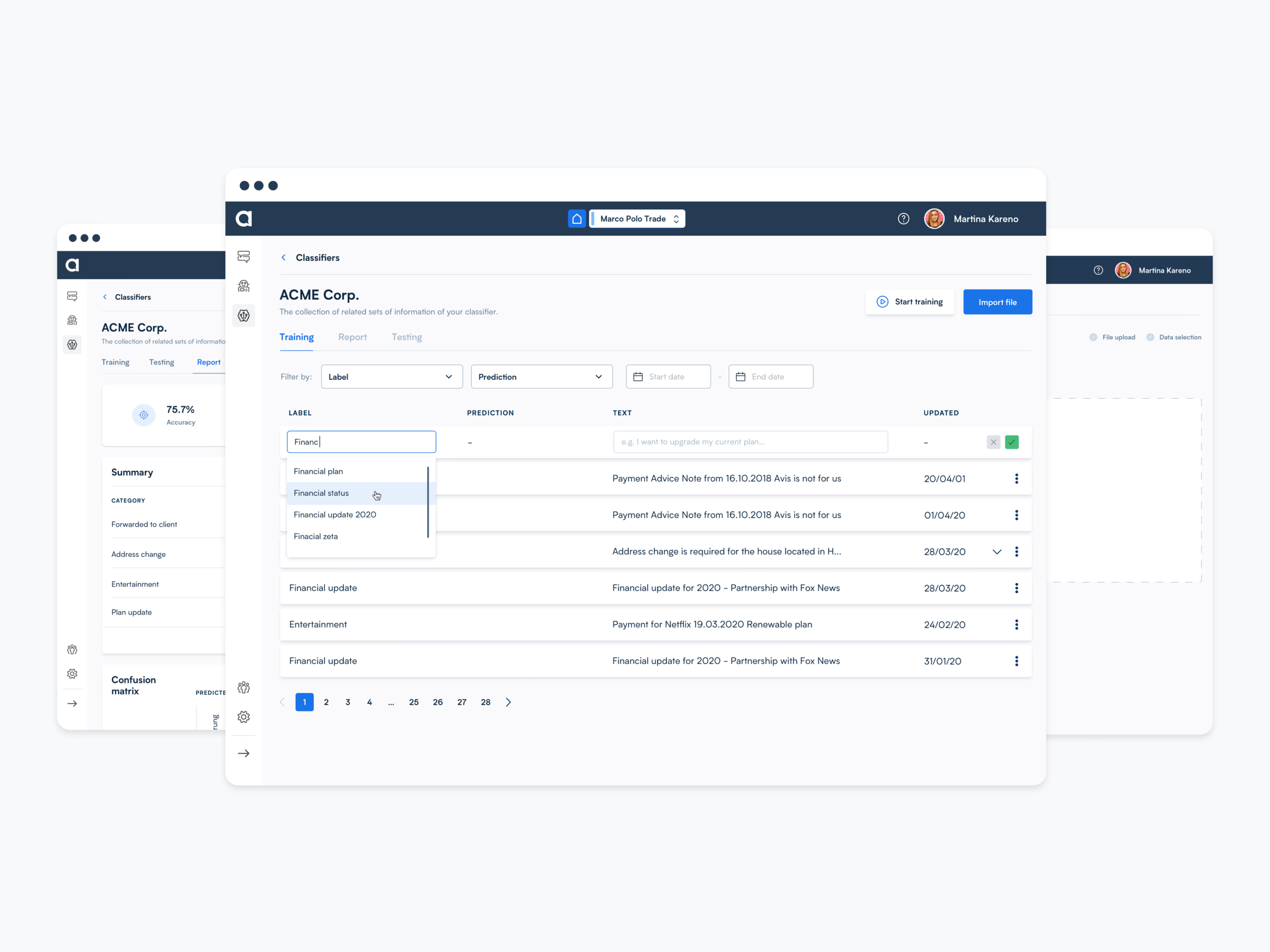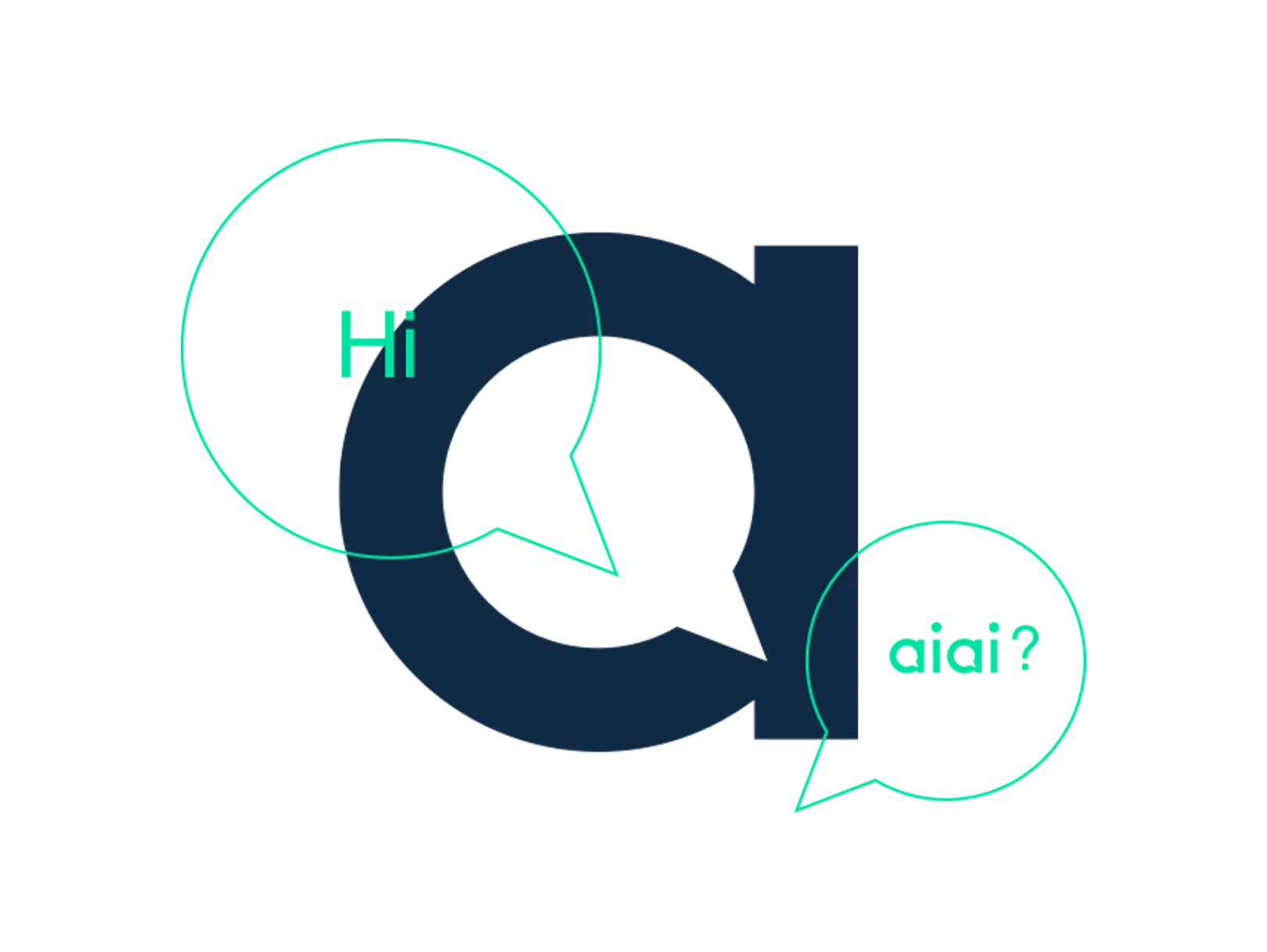About
aiaibot is platform consisting of three modules. The first module is the Chatbot, which allows users to easily and flexibly build stories that are quickly customizable. By integrating pictures, GIFs, videos, file uploads and surveys, the chatbot can be ideally emotionalized according to the user's ideas. The second module is AI. Among other things, AI enables the training of so-called classifiers for the recognition of customer concerns (intents) and a control of the dialog based on it. It is a channel-neutral workflow engine for end-to-end automation. The heart of this module is the Workflow Builder, which connects external systems to your chatbot in a simple and transparent way. This option opens up countless further opportunities to expand the chatbot and automate processes in marketing, sales, customer service, HR and IT.
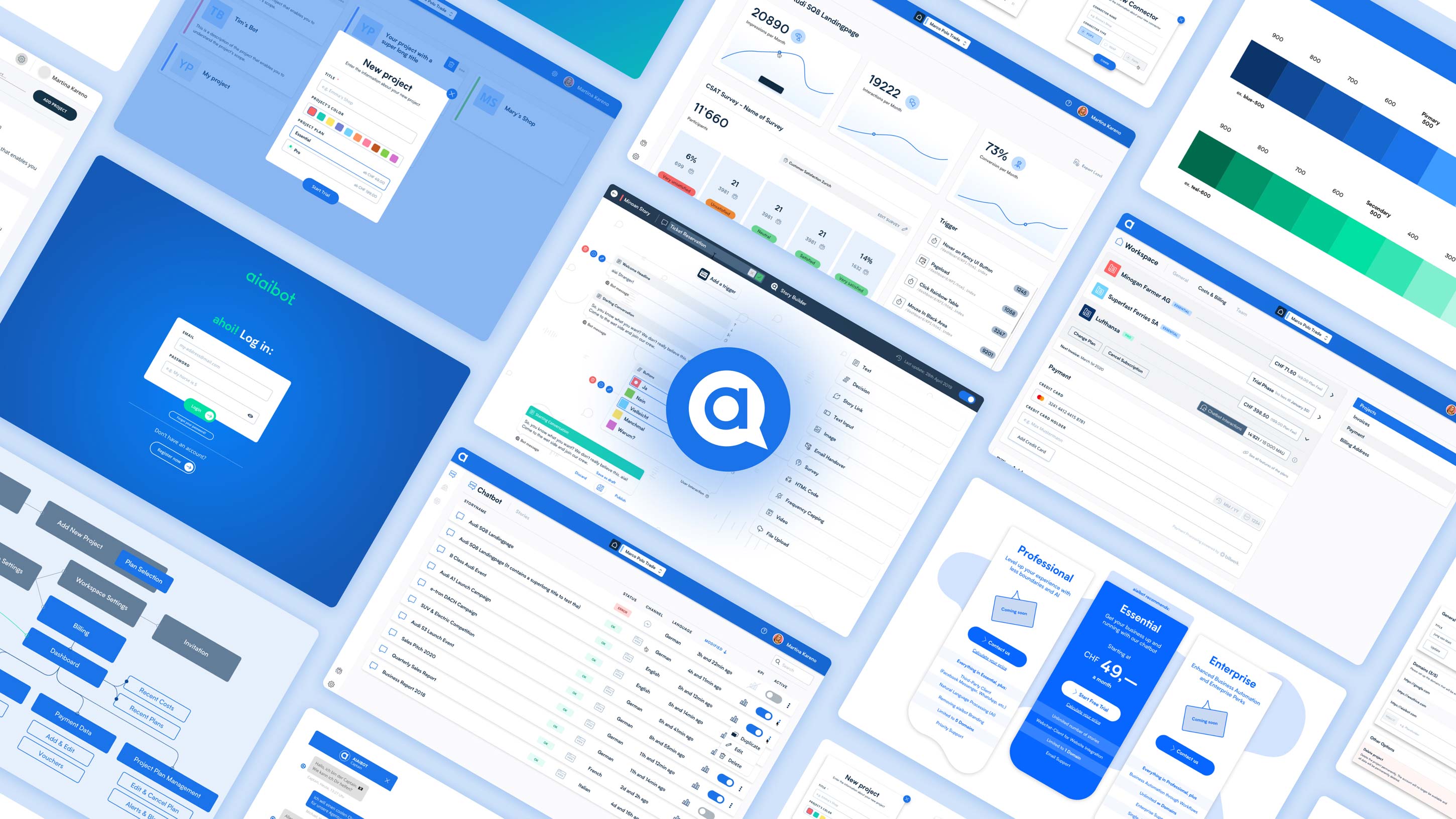
My Role
In my role as a UX Engineer, I operated at the intersection of design and engineering in a collaborative environment alongside software engineers, UX designers, and product managers, all within a two-week sprint framework. I conducted research, developed reusable components, and managed our design system using Sketch and Storybook, all while effectively creating bridges between design and engineering teams.

Challenge
When we began working with aiaibot, we quickly encountered the issue of overly saturated webpages. In particular, the digital platforms of small and medium-sized companies have evolved into complex, content-heavy hubs. As conversion optimization becomes increasingly expensive and difficult to maintain, businesses and content creators are on the lookout for a communication channel that not only captures attention but also fosters genuine, human interaction with their audiences.
At the same time, users are seeking quick answers to a variety of questions. For example, many turn to support forums or FAQ pages for service-related inquiries, while others prefer a streamlined sales process that cuts through the often complicated customer journey involved in purchasing products.
Leveraging the insights from our previous research team—and drawing on our work with PIDAS’s on-premise solution called lena, we were able to integrate this expertise into a refreshed mission and vision, culminating in the scalable and dynamic SaaS product known as aiaibot.
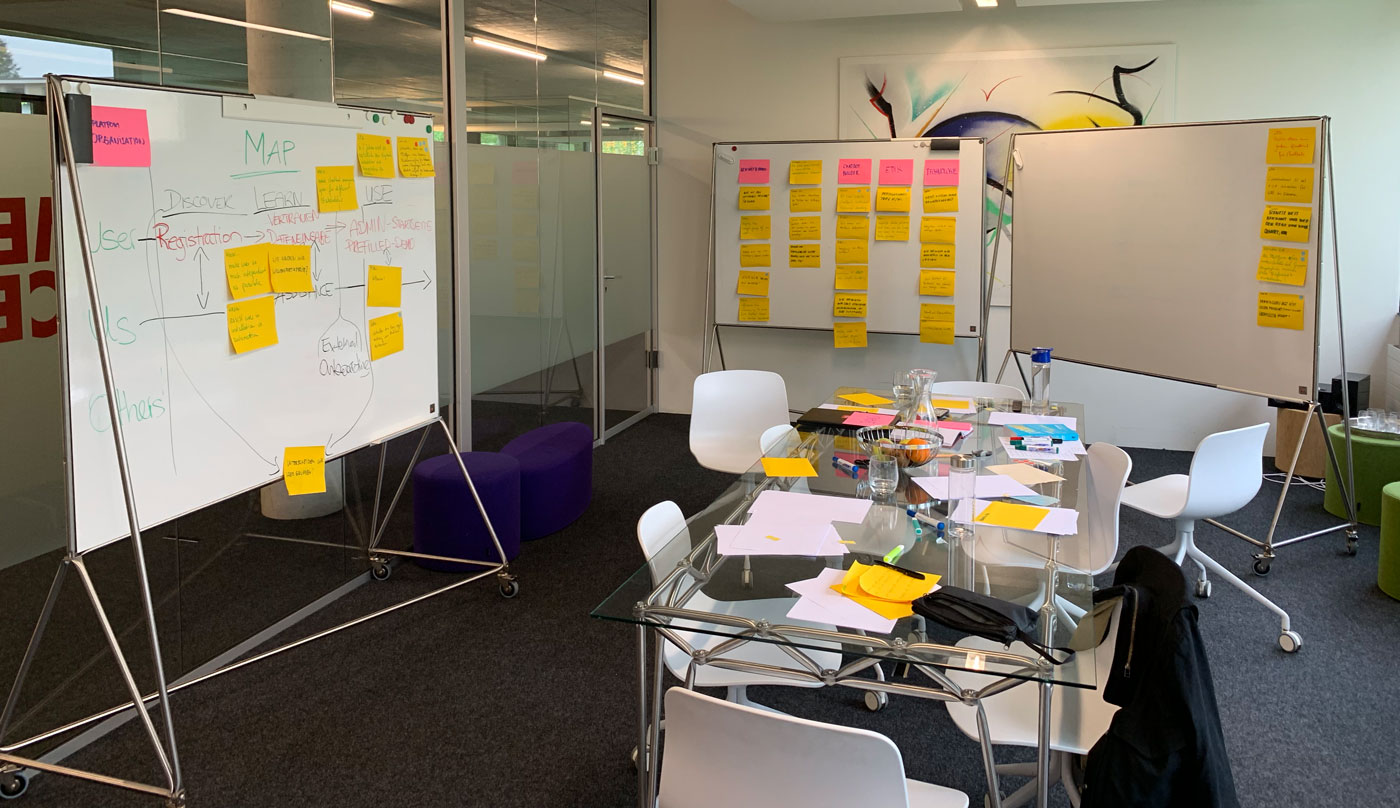

User Focus & Audience Development
In developing our conversational platform, we began by considering the wide array of users who experience the challenge we're addressing and who are eager for a solution. This initial breadth made it difficult to pinpoint a single target group, as conversation is a universal aspect of human interaction.
Guided by a user-centered design approach, we placed our end users at the heart of our process, developing our first personas as a constant reminder that our solution must be versatile and inclusive. This strategy encouraged us to continually question and refine our design to accommodate a broader spectrum of needs.

To rigorously validate our user experience, we defined three distinct segments based through research, defined clear business goals and identified significant pain points that our robot module—integrating both the Chatbot and AI functionalities—aims to address. Here’s a synthesis of the insights gathered from our key personas:
1. Agency
Business Goals
- Rapid Deployment & Customization: Enable agencies to quickly craft engaging conversational experiences that reflect diverse brand voices, using a flexible, media-rich platform.
- Enhanced Client Engagement: Leverage multimedia elements (images, GIFs, videos, file uploads, surveys) to create emotionally resonant stories that drive higher conversion rates.
Pain Points
- Technical Complexity: Existing solutions often require extensive coding and lack the agility needed to tailor conversations for different client needs.
- Fragmented Systems: Without an integrated, channel-neutral workflow engine, agencies struggle to manage multiple tools and ensure a consistent experience across touchpoints.
2. Self-Doer
Business Goals
- User-Friendly Customization: Offer an intuitive platform that empowers non-technical users to build and update chatbot narratives quickly, without heavy reliance on IT support.
- Cost-Efficient Automation: Provide an end-to-end automation solution that streamlines routine interactions, reducing operational overhead and response times.
Pain Points
- Steep Learning Curves: Many available tools are overly complex, discouraging small business owners from experimenting or making rapid updates.
- Limited Automation: The lack of a cohesive, integrated workflow often forces users to handle repetitive tasks manually, impacting efficiency and scalability.
3. Enterprise
Business Goals
- Scalable Integration: Develop a robust system capable of seamless integration with existing enterprise software, enabling a unified approach to customer service, marketing, and internal workflows.
- Advanced AI-Driven Insights: Utilize AI classifiers to accurately detect customer intents and guide conversations, ensuring a consistent and proactive user experience across channels.
Pain Points
- Inflexible Legacy Systems: Enterprises face challenges with outdated solutions that cannot adapt to evolving customer needs or integrate with modern tech stacks.
- Resource-Intensive Management: Manual interventions in managing and updating chatbot interactions lead to inefficiencies, increased costs, and slower response times.
We deliberately focused on the Agency segment, as these partners can drive the adoption of chatbots as a new communication channel for their clients, enabling us to gather diverse feedback and further enhance our platform.
Design Process
Designing within an agile framework required ongoing experimentation to uncover the most effective approaches for our team. We collaborated closely with our CTO and Product Management, exploring a variety of strategies to align our process with our goals.
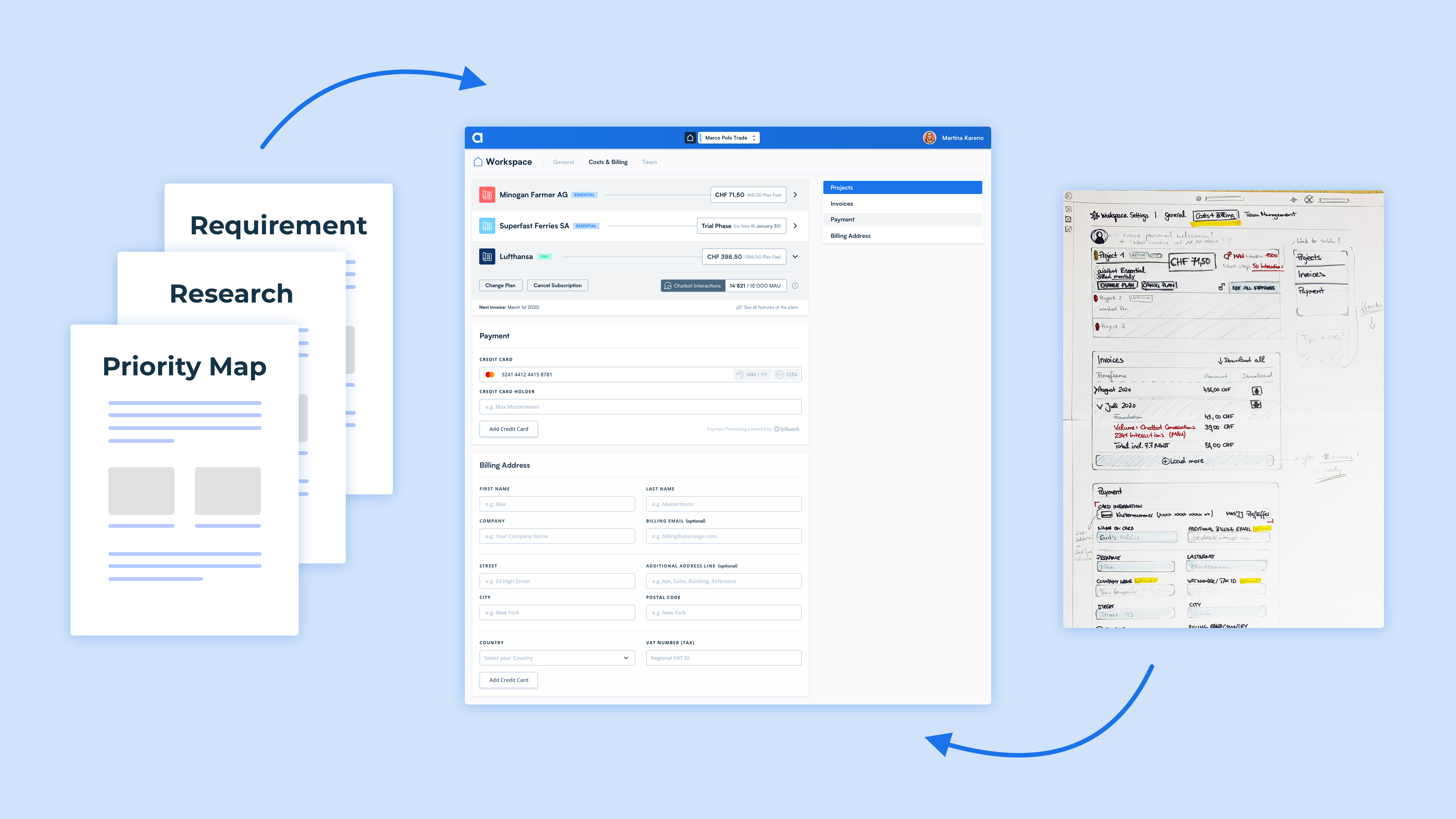
Recognizing that the design process was highly individual, we began testing multiple methodologies and rhythms to enable Agile Design across the company. We introduced "Pre-Sprints" dedicated to research and constructing the information architecture for new features. This phase was followed by an iterative Agile Design phase, where designers and frontend engineers worked together to refine and enhance our solutions.
As we tackled challenges from each sprint and delivered high-quality designs to our development teams, we continuously improved our overall setup and design system. Guided by DesignOps principles, we placed a strong emphasis on optimizing working conditions, refining our tools, and ensuring the satisfaction of every designer. Streamlining these processes allowed us more time to focus on the creative aspects of our work—a benefit for everyone involved.
The impressions below showcased the results of our collaborative efforts—a testament to holistic teamwork, our dedication to our vision, mission, and values, and a process that continually evolved to meet our needs.
Robot Module Impressions
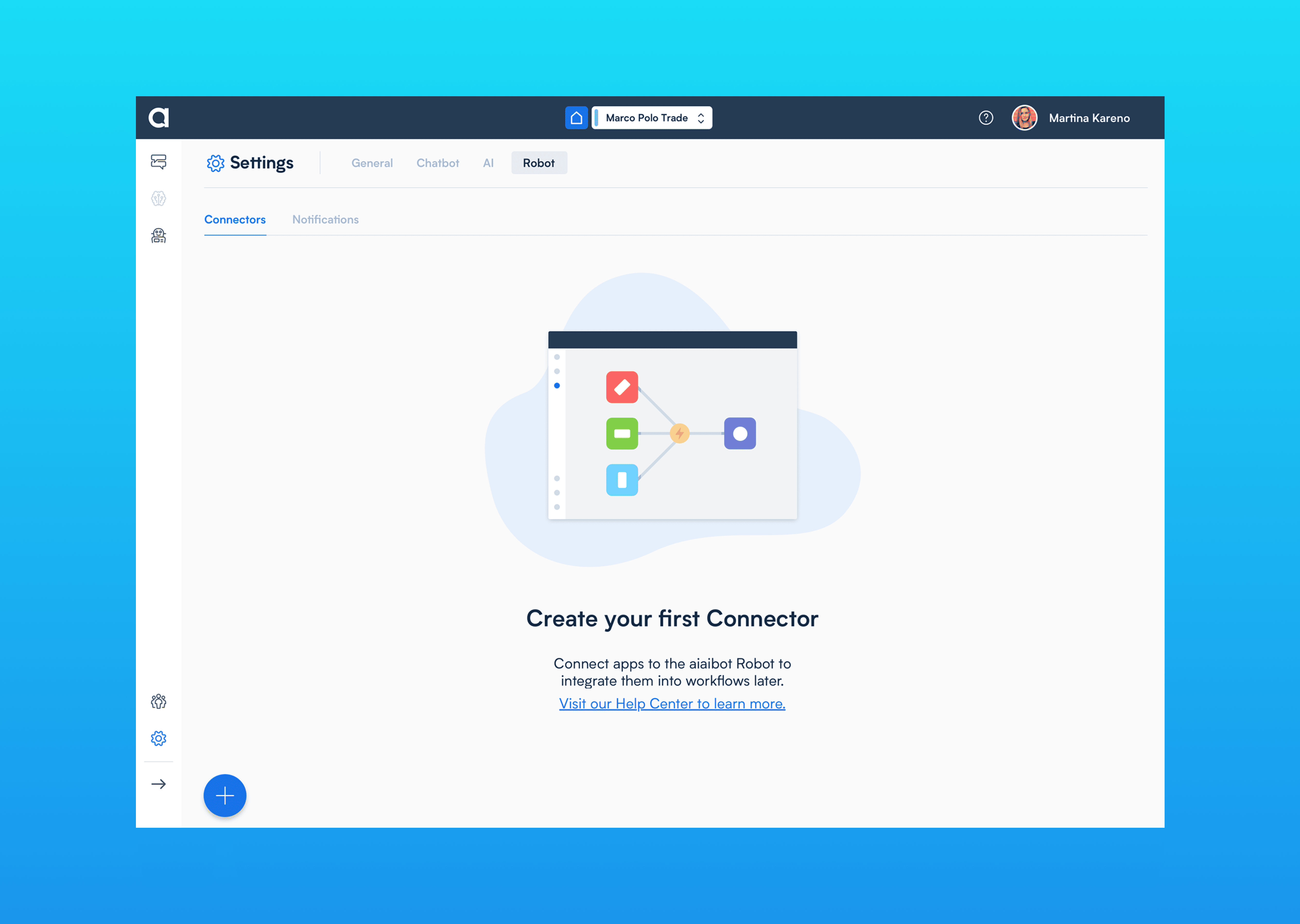


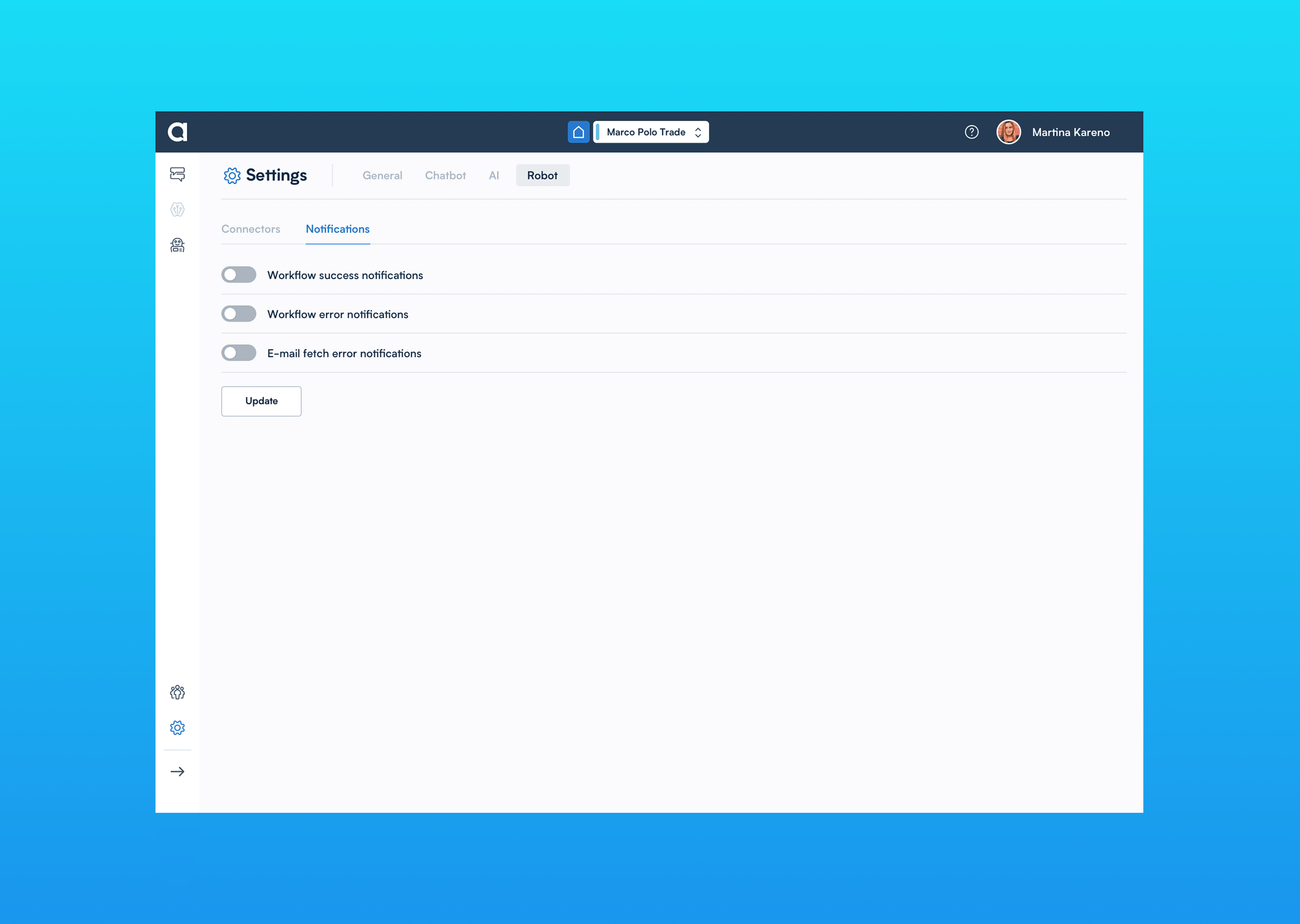
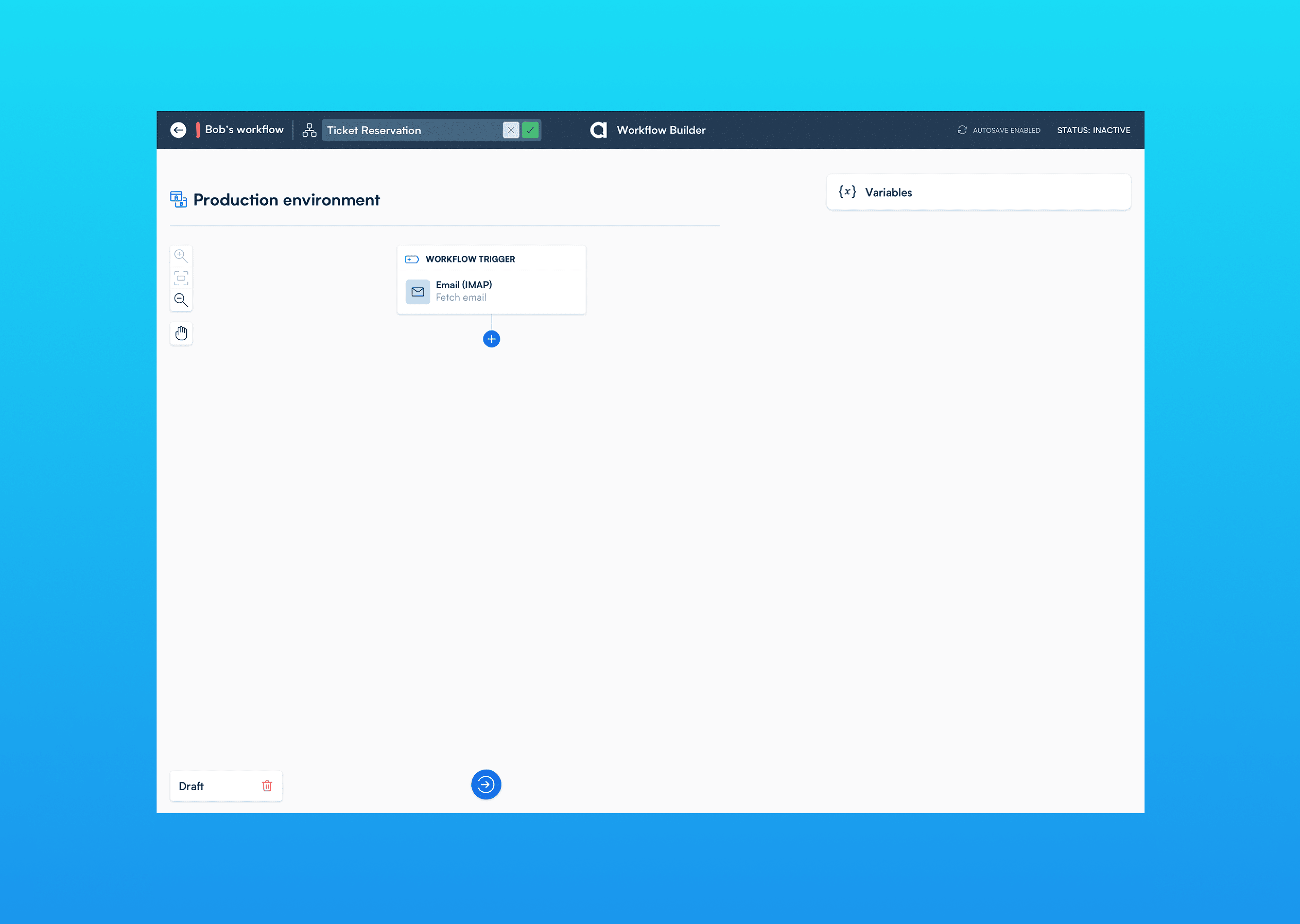
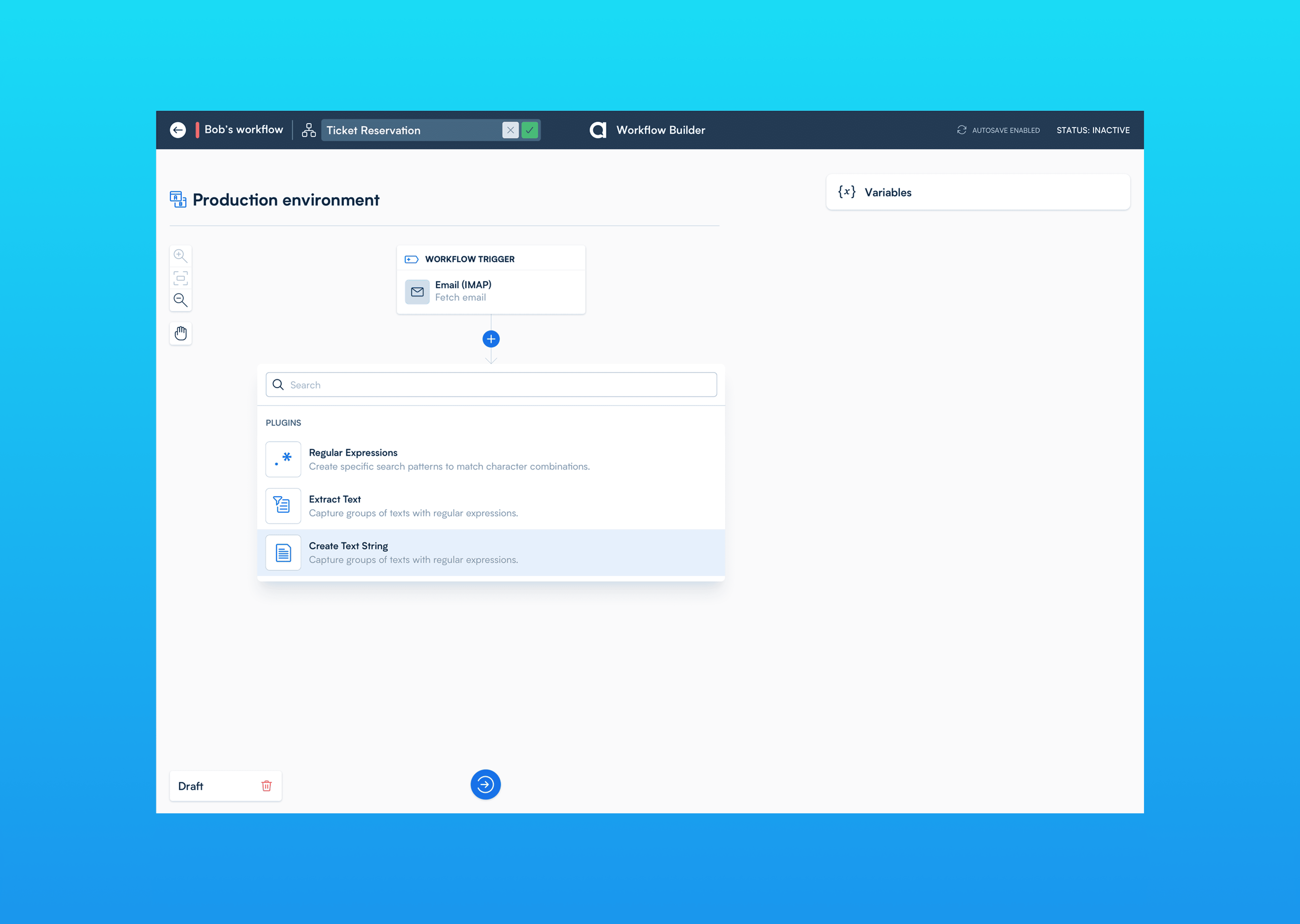

Chatbot Module Impressions
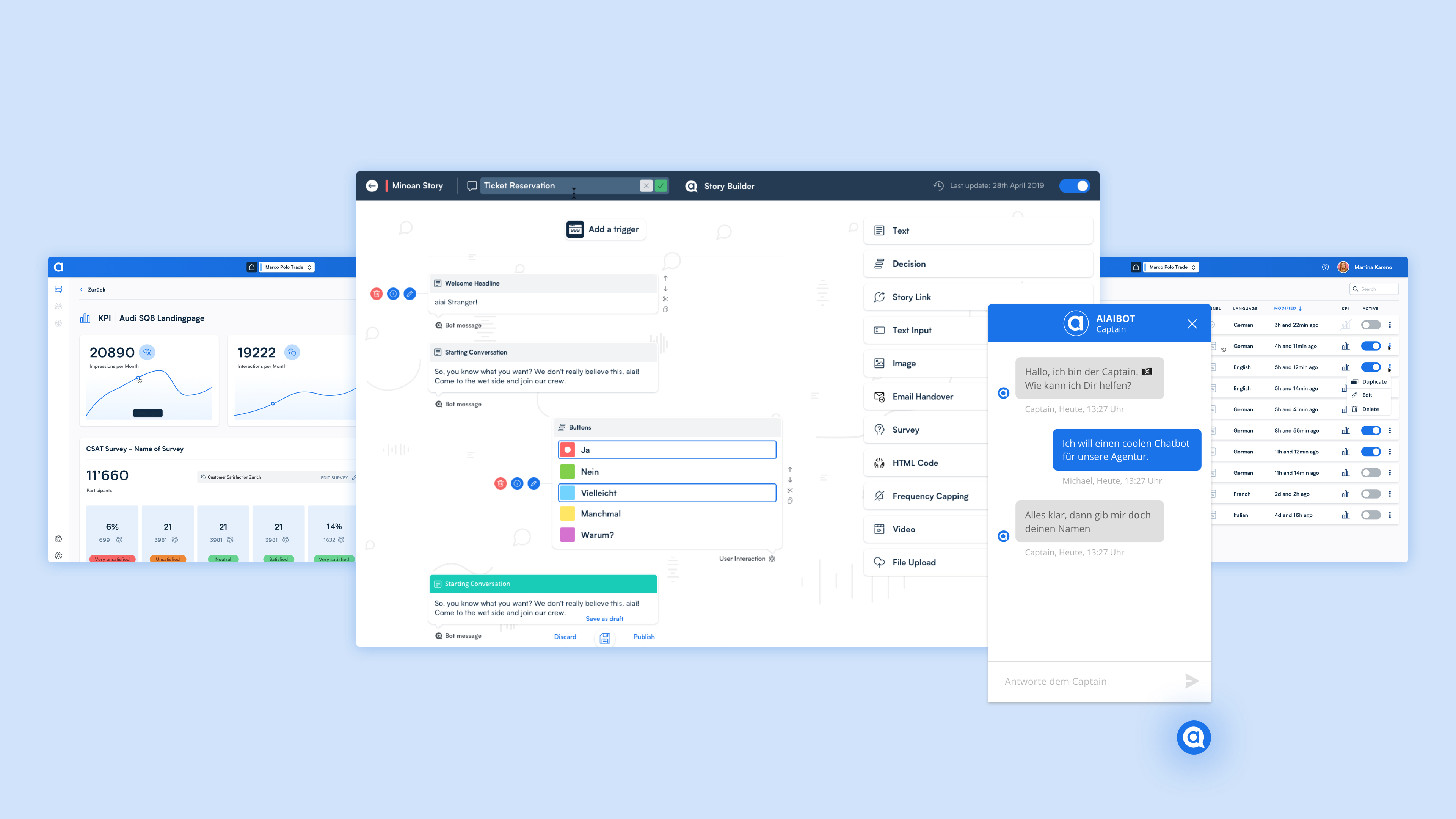
AI Module Impressions
